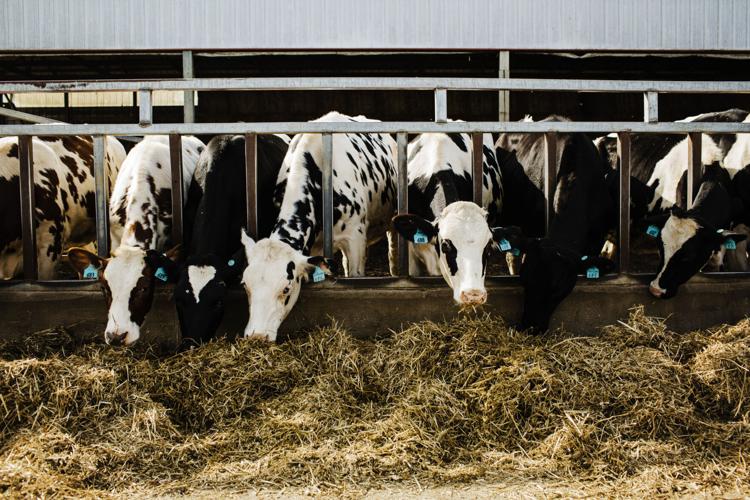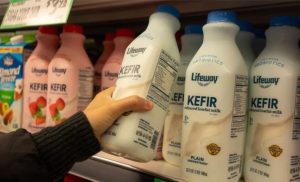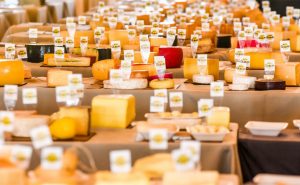“While herd size is not the only factor that matters for production costs, these scale-related cost differences are important. As a result, larger farms are more likely to realize positive net financial returns to milk production,” said the report, written by James W. MacDonald.
Economies of scale allow an operation to spread expenses over greater production, thus reducing per-unit costs — especially important when milk prices are poor.
Consolidation in the dairy industry is nothing new, but the increasingly rapid pace of consolidation is troubling, said Marin Bozic, an assistant professor in the University of Minnesota’s College of Food, Agricultural and Natural Resource Sciences. Bozic, whose areas of expertise include demand for dairy and U.S. dairy policy, was asked by Agweek to comment on the ERS report.
“The consolidation is going to continue,” and the goal of U.S. dairy policy should be reducing the size of the decline “to a humane pace,” Bozic said. “That’s the best we can hope for.”
When 4% of dairy farms quit operation in a given year, it can be explained by older operators unwilling to invest in maintaining their aging facilities, he said.
“But when you get to 7 or 8 or even 10% of farms exiting a year as we have recently, those exits look quite different. Then you have 30-somethings and 40-somethings — 40-year-olds relatively early in their dairy careers — loaded with debt” who, despite their determination, are going out of business because of poor milk prices, Bozic said.
“These folks who are exiting, their dreams are shattered,” he said.
On the other hand, fewer younger people going into dairy isn’t a bad thing economically. “We need those young people in different (economic) sectors. Folks that have enough grit to go into dairy — and skills and perseverance and work ethic — they really are the salt of the earth,” he said.
“They will be productive members of society, just in a different business,” in some cases “contributing more than they would in dairy,” Bozic said.
More from the report
Other major conclusions of the ERS report:
• “Milk cows and production are moving to much larger dairy farms. Farms with at least 1,000 head today account for most cows and production, and farms with at least 5,000 head — nearly nonexistent 25 years ago— accounted for a sixth of all cows by 2017.”
• “While some farms in every herd size class are financially viable, small commercial farms with 10-199 cows face a challenging environment. Such farms accounted for most dairy production 25 years ago, but their numbers are shrinking; by 2017, they accounted for just one-fifth of production.”
• “In 1997, 56.3 percent of U.S. milk cows were on small commercial dairy farms (10-199 cows), while farms with herds of at least 1,000 cows held just 17.5 percent of all milk cows. (By 2017) the number of small commercial dairy farms fell by two-thirds, while their share of all milk cows fell to 21.6 percent. Meanwhile, the number of farms with at least 1,000 cows more than doubled, and those large dairy operations came to hold 55.2 percent of all U.S. cows.”
Among the disadvantages for smaller dairies:
• Consumers are using less fluid milk. which generally is shipped short distances for sale, and more dairy products such as cheese, yogurt and dry milk power that are shipped long distances or exported — a change that tends to favor larger farms, the report found.
Some small farms have economic strengths, however, the report noted.
“Farm production costs may also vary widely, and in some cases may allow smaller operations to be financially viable,” the report found. For example, effectively managing pasture and forage can help to provide access to high-quality feed at attractive prices, while good herd management can produce “consistently high-quality replacement heifers.”
Mid-sized dairies at risk, too
Mid-sized dairy farms, ones with 300 to 1,500 cows now and established in the 1990s by people who soon will be nearing retirement, will most at risk of going out of business in coming years, Bozic said.
“My concern is that we may end up with a bimodal distribution — very small on one end and very large on the other and not (a) middle ground,” Bozic said.
Supporting mid-sized dairy farmers to grow their business and remain in operation will be crucial, he said.













